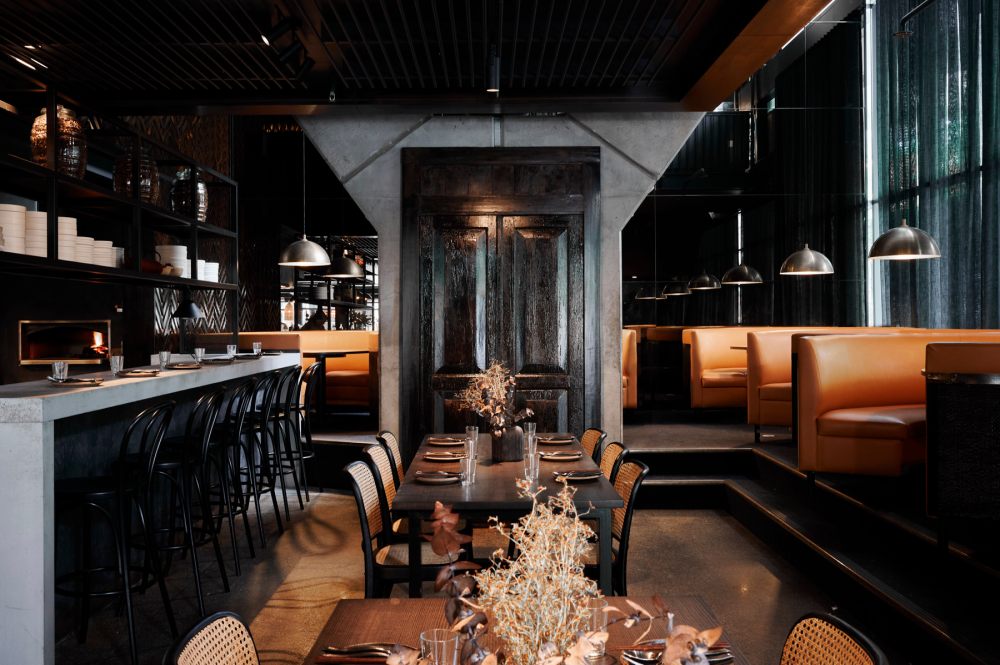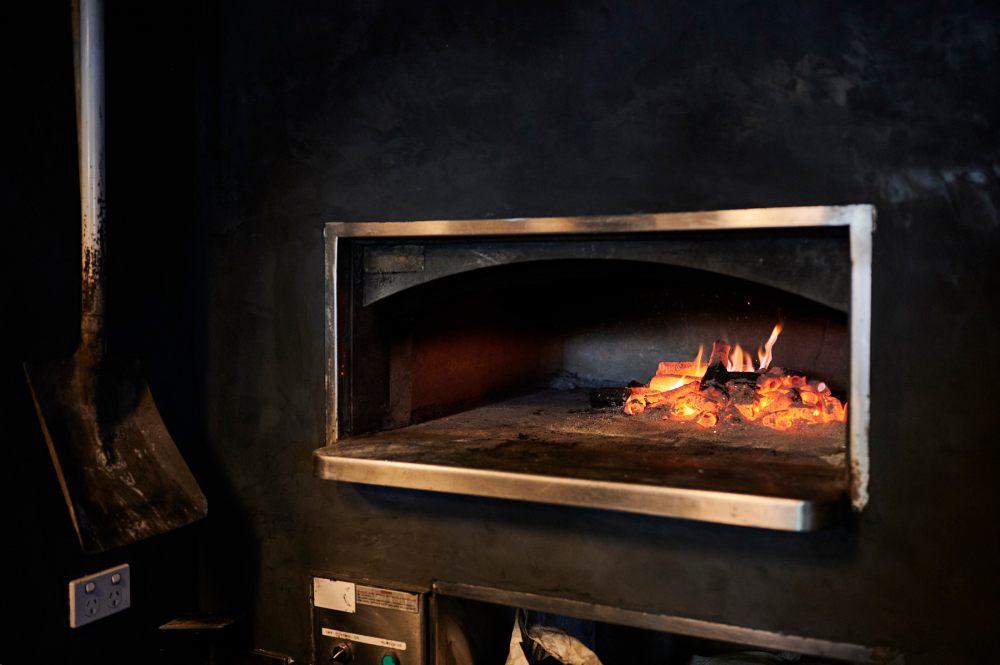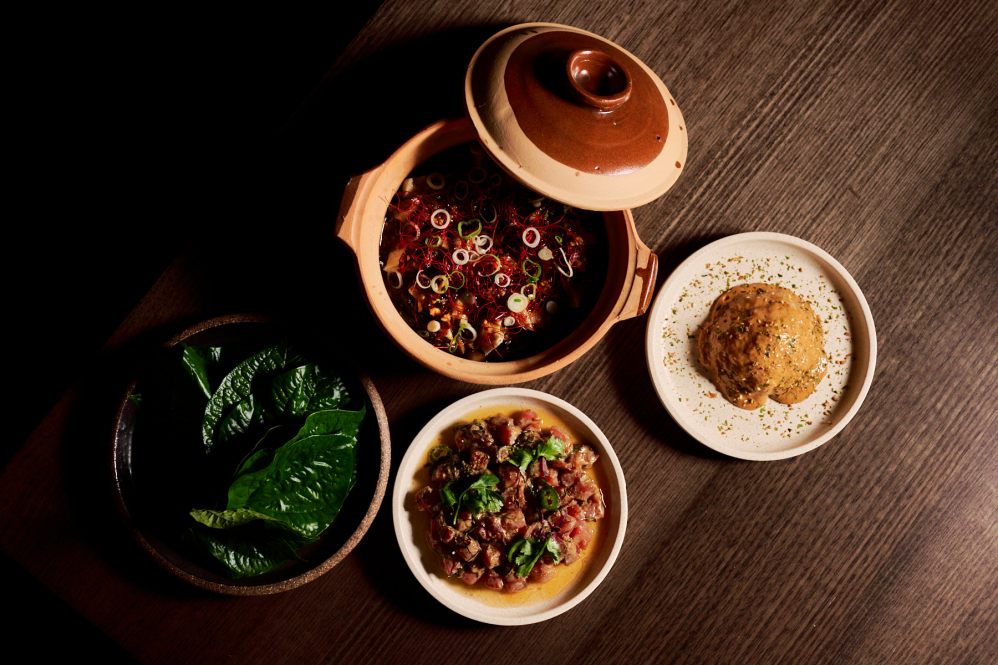Brendan Hill has spent the past 20-odd years in the kitchen, working at a raft of venues from island eateries to fine diners. Two decades culminated in a move to Canberra to join a growing hospitality group and work alongside James Viles.
The chefs make a formidable force and are moulding a culinary experience at Wilma that sees primitive cooking techniques teamed with standout produce.
Hill speaks to Hospitality about the journey that led him to Harvac Group, championing cooking with fire and the perks that come with true collaboration in the kitchen.
Hospitality: How did your career in the industry begin?
Brendan Hill: I grew up in Queensland in a small country city called Toowoomba. I worked with my father in a commercial bakery when I was around 13 and that got me started in the food scene. I went to TAFE in Toowoomba and began my apprenticeship and then I moved up to The Whitsundays for a while. I then went to Victoria before going to a little place doing modern Asian cuisine on the Sunshine Coast.
I decided to go to Sydney in 2010 and worked at Aria for four years as a commis chef. I was made junior sous eight months later and stayed there until 2014. I went to Bentley as a sous chef and spent time there working under Brent Savage and Aidan Stevens, but decided to take a step away from fine dining.
I moved into high-end catering for brands like Dior and Cartier for a couple of years until my return to fine dining. I opened 12-Micron with Australian Venue Co. and spent 18 months with them. My wife became ill, so I stepped out of the kitchen for few years. I decided to get back in with the Harvac guys in mid- 2020 at what was Kokomo’s and has now become Wilma.
What interested you about joining Harvac Group?
I think the opportunity to work with James. I crossed paths with him a few times over the years and I had eaten at Biota. During the three-year kitchen hiatus, I was working in foodservice as a sales rep and supplying Harvac. James reached out to me and asked if I knew anyone who was looking for a job as I had a lot of contact with restaurants. I had been toying with the idea of getting back into the kitchen and it organically happened from there.
I came on board in the first week of July and Loquita opened in the first week of August. I hit the ground running: the concept was done and James and I developed the menu. I oversee the kitchen at Loquita day to day, maintaining standards and coaching the young team in there.
Loquita’s business structure doesn’t [necessitate] a hierarchy; it’s quite fast paced and the kitchen is less than 15sqm. We probably do upwards of 350 covers on a Friday and Saturday night. We try to be fairly authentic with what we’re doing and we use a specialist Mexican supplier from Sydney.
People’s perception of Mexican street food is quite murky and Westernised from the
reality of what it is. The Canberra market is a little bit of a hard one to crack.

Wilma has taken over the former Kokomo’s location, what prompted the team to develop a new concept?
We anticipated launching in early 2021, but the idea was always to rebrand Kokomo’s and separate The Pearl and Wilma. It all happened pretty quickly; we had come out of lockdown and were umming and ahing about what was going to happen to Kokomo’s.
Being such a big venue, it couldn’t sustain opening with 25 people, which was the maximum we could have inside at the time. So they sped up the process and decided to do a refit and that happened over five weeks.
We opened on 3 December and had a couple of weeks to come up with the menu. James and I got in there a few weeks before opening and nailed down what we were going to do; looking at recipes, suppliers, what was in season and refining everything.
With the menu development side of things, we wanted to pay homage to our own backyard using native Australian ingredients while heroing classic dishes such as char siu pork, XO pippies, prawn toast and roast duck. We’re recreating those flavours with a bit of a twist. We wanted the menu to be pretty big and grand like the fit out.
We have a wood-fired oven and added a big custom grill made by a local blacksmith to the kitchen. Some deep fryers were taken out and there were some woks put in before [Wilma] in anticipation of the location’s next move.
Cooking with fire is a key part of Wilma’s ethos, what are the pros and cons that come with the medium?
There’s something really primitive about cooking over fire and wood and we wanted to emphasise that on the menu. We are using applewood and ironbark from Blackheath Firewood. The flavour you get out of cooking with fire is so different and it’s a lot harder to cook with. You need to pay attention and use your intuition. It’s not set and forget like a combi oven; you have to manage the temperature and it’s easier to stuff things up. For me, it keeps me in touch with food more. It’s not so generic, if that makes sense.

Would you say the opportunity to work with a high-profile chef is a big drawcard for the kitchen team?
James is a well-known chef and he has a diverse background having worked all over the world. He’s incredible knowledgeable; I’ve learned a lot from him over the past seven months. He’s passionate and he lives and breathes food 24 hours a day. When we were about to open, he stayed on a property outside of Canberra that’s pretty much an old farm hut, but he loves it because it’s like camping.
A lot of the team are thriving on learning new techniques and ideas. We have such a good core team and it’s not just a ‘James and I’ project; everyone has risen to the challenge to get it off the ground. We retained 95 per cent of staff within the group after lockdown.
We’ve added to the brigade as we’ve needed to due to having a bigger menu and a bigger offering. It’s hard to find skilled chefs out there who have experience cooking over fire. We had some people come and go in the first few weeks and it’s been a hell of a challenge; we’re in the same position as everyone.

What are some key lessons you have picked up working alongside Viles?
I think just being in touch with the food and where it comes from; he’s a champion of regional produce and local produce. There is a real emphasis on provenance and we didn’t want to skimp on quality. We have Hiramasa kingfish, oysters from Tathra, lobsters from the South Coast, pippies from Ballina and prawns from Yamba.
Working side by side and bouncing ideas off each other is another thing. There is no question that’s stupid; James is a good mentor. He has his way of doing things and comes from quite an old-school mentality with classic techniques and whatnot. But we have flipped that on its head at Wilma with the volume we’re doing and we had to find new ways to get great results. He’s not set in his ways. It’s not, ‘My way or the highway;’ he lets us figure things out.
You’ve been back in the kitchen for a few months now. How are you feeling about the decision to jump into the deep end?
It’s been pretty exhausting. I can’t say I forgot what it’s like, but it’s been invigorating. I never wanted to get out of the kitchen, but I made the decision to be with my wife. As a chef, you’re aware of the hours you work; it’s draining and taxing, but I’ve always had to scratch that itch. I had to follow my passion and my heart and that’s all I’ve done for the past 20 years, except for the hiatus.
I don’t know how many other jobs where you can really express yourself. Cooking is
a real individual thing. There’s producing food day in day out, and while we aim for
consistency, there’s always individuality. [Harvac] is growing; I think there will be
an emphasis on sustainability and off-grid cooking moving forward. The belly is still
burning and it’s full steam ahead.
Sponsored Content

The future of reusables in the hospitality industry
Sponsored by Huskee

The premium deep frying oil trusted by William Angliss
Sponsored by Peerless
Trending Now
Resources
Lorem ipsum dolor sit amet, consectetur adipiscing elit. Fusce ac ornare lectus. Sed bibendum lobortis...
Lorem ipsum dolor sit amet, consectetur adipiscing elit. Fusce ac ornare lectus. Sed bibendum lobortis...
Sign up for our newsletter
